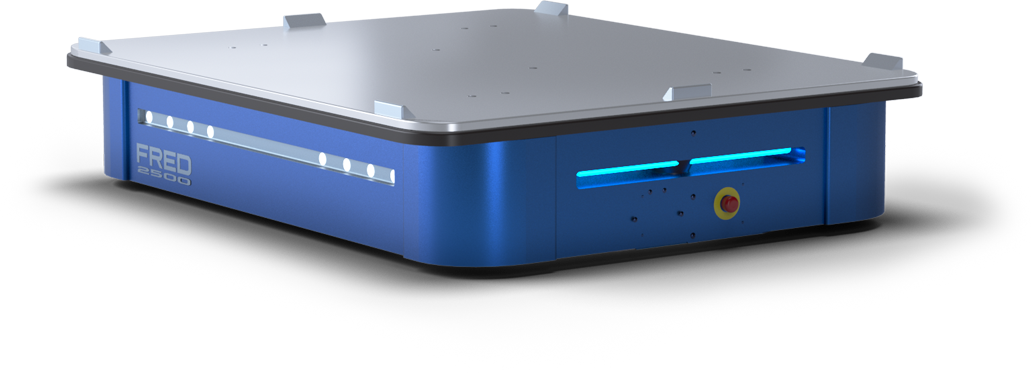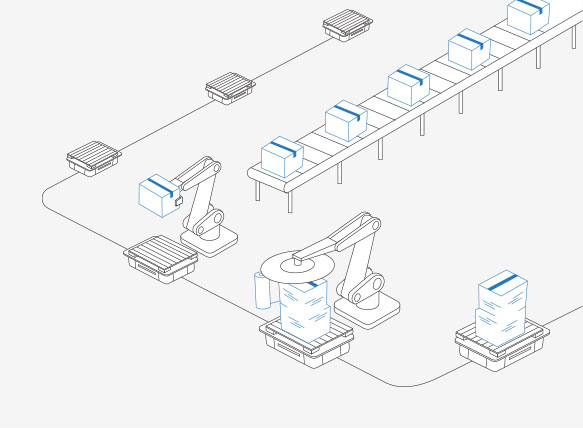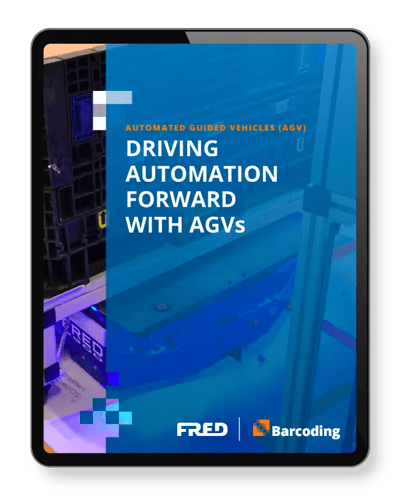The novel coronavirus COVID-19 continues to wreak havoc on economies worldwide. You don’t need to be a publicly traded company to feel the pain. Businesses in virtually every industry are suffering, and many are unsure of how to react. In these trying times of volatility, gauging what even the near future holds is near impossible. There are simply too many variables in play.
“There is a perfect storm brewing in the global economy,” a recent article out of the Brookings Institution asserts. Noting that most recessions are caused by a demand, supply or financial shock, it goes on to state, “COVID-19 promises to deliver all [three] in a single package.”
The Cost of a Global Supply Chain
It’s fair to say we can only be certain of two things: more uncertainty and more economic hardship.
“…the peak of the impact of Covid-19 on global supply chains will occur in mid-March, forcing thousands of companies to throttle down or temporarily shut assembly and manufacturing plants…,” claims the Harvard Business Review. “The most vulnerable companies are those which rely heavily or solely on factories in China for parts and materials.”
But even if your business doesn’t rely on China for materials, that means little in today’s global economy. All businesses are now so interdependent, the effects of an economic meltdown ripple throughout every industry. When tourism and travel grind to a halt, it’s not just airlines and hotels that hurt. Every business that supports them hurts, too, along with the businesses supporting those businesses (and so on).
Combatting a Strained Labor Pool
It’s hard to know where to focus your efforts to safeguard your business and bottom line. Supply chains in disarray. Shuttered businesses. Layoffs. Shelter-in-place orders to enforce social distancing. The list of economic disruptors goes on for so long it’s easy to feel that panic—or hope for the best and do nothing—are our only two options.
But neither is a realistic option. And there are business-sustaining measures you can take right now.
When China was in the midst of its greatest struggle against the virus, says a recent Forbes article, “manpower was the most pressing issue with ramping [manufacturing].”
So, one area in which you can make an immediate impact is by combatting COVID-19’s strain on our labor pool. How? Through increasing employee safety through automation.
To be clear, the purpose of an AGV like FRED isn’t to take away jobs. It’s to supplement your existing workforce, keep them safe and ensure your business remains as productive as possible—and afloat.
How an AGV Can Help
You might wonder how an AGV can possibly help. It’s an investment, after all. Is it wise to invest in new equipment with so much uncertainty around what the future holds?
For many, the answer is “yes.” Here are five examples that demonstrate why. And it’s quite likely you’ll discover several more as you begin to further consider how automation can protect your workforce, productivity and, ultimately, your business.
1. Keep your skilled labor where they offer the most value.
Should the terribly unfortunate circumstance arise that you’re forced to cut labor in order to make payroll, you’ll want to retain your skilled workers’ talent. And you’ll want that talent where it’s needed most. Without an AGV, you’d have to reallocate them to roles that demand less skill. And when they can’t be productive, neither can you.
Alternatively, with an AGV, your skilled labor can stay put in the roles for which you hired or promoted them. FRED can handle moving material from point to point.
2. Maintain operations even when your workforce becomes ill.
What happens if an employee becomes ill? Or worse, several? What happens if employees must self-quarantine? In a time like this, you’ll certainly not let them go and replace them (even if the labor was available).
With an AGV like FRED, you’d never have to. FRED can work 24/7 to make up for the shortage. You could spend about 90–120 minutes reconfiguring FRED’s path, putting it where your employee would have otherwise been. You could even reconfigure FRED’s path on a daily—or even semi-daily—basis, nimbly adapting to changing circumstances.
3. Promote a safer work environment.
We know social distancing is key to slowing the spread of the virus. In many jurisdictions it’s now mandated. In many more—if not all—it soon will be. Non-essential business closures. Gatherings over a certain number of people banned. Shelter-in-place orders. These are three examples of enforced social distancing. And while healthy for the population at large, they hamper productivity. But with an AGV, you can lessen the potentially devastating effects.
In more ways than one, FRED brings you opportunities to practice social distancing on the manufacturing or warehouse floor.
FRED can transfer material from person to person, keeping them at a safe distance and without needing another person to carry out the movement (as a side benefit, this tactic also frees up square footage so you can put it to more productive use). Depending on your setup, FRED can also automate your End-of-Line (EOL) processes. A quick-to-implement example of this would have FRED (a) making a stop at a palletizing station (robotic or manual), (b) moving on to a semi- or fully automatic stretch wrapper and then (c) carrying the wrapped pallet to your loading dock.
4. Make staggered shifts more productive.
In an effort to reduce the number of personnel present at any one time, many businesses have taken it upon themselves to introduce staggered shifts. But for manufacturers and warehouses that don’t already operate around the clock, this concept can take its toll on both personnel and productivity.
FRED, however, is designed to work around the clock, and without breaks. 24/7/365, it can work alongside employees, easing their workload while increasing their productivity.
5. Allow for more employees to work remotely.
To be fair, unless you operate a “lights-out” factory, most employees will still need to be on-site. But an AGV like FRED allows your most skilled labor to work remotely without sacrificing productivity. It’s an option strongly worth your consideration as the virus continues to spread; you need to keep the personnel you rely on most safe.
What happens if valued material handlers contract the virus and cannot be on-site? Or if you’re ordered to limit the number of workers on your floor as a precautionary measure? Without an AGV, you might have to send in your inventory control manager (ICM) to pick up the slack. But with an AGV, it’s no issue. Material still gets moved from point to point. And your ICM can work remotely, insulating you—and them—from a much more disruptive circumstance.
These five examples only scratch the surface of how an AGV can protect your employees while insulating your business and bottom line. But they’re all realistic. Now is the time to start considering the benefits of affordable automation to supplement your workforce. It’s not alarmist, but rather practical, to say: tomorrow it may be too late.
The Cost of Getting Started with AGVs
We designed FRED with the goal of eliminating the barrier to entry for automation. Your investment—in time, effort and money—needn’t be high. And with FRED’s RaaS (Robot as a Service) rental program, it needn’t even be permanent.
1. Time
FRED follows a magnetic tape path, requires no Wi-Fi, Bluetooth or software, and can be up and running in only two hours. FRED’s set up is so simple, in fact, its complete installation instructions fit on just one page.
2. Effort
Because FRED is so quick to set up, the effort of incorporating it into your workflows is negligible. And because it’s so simple to operate, there’s virtually no learning curve for employees.
3. Expense
FRED is a heavy-duty AGV that can carry up to 2,500 pounds and tow up to 5,000 pounds. But it costs only $35,000 to purchase outright (FRED’s medium-duty counterpart, FREDDiE, costs only $20,000).
But FRED can also be had through its RaaS programs. With a six-month commitment, FRED costs just $1,000 per month (and FREDDiE just $750 per month). Not only that, shipping to your facility is free. If you feel you need only a temporary solution to carry you through these uncertain times, a RaaS program offers just that.
FRED is so affordable, it delivers a near-instant ROI. When determining whether it’s right for you, FRED’s cost isn’t likely to be the determining factor. And it’s so quick and easy to integrate into your operations that time and effort aren’t likely to factor in, either. Skepticism regarding its efficacy is more likely. And the truth is, FRED isn’t the right solution for every warehouse or factory. So, if you have questions—or if you’re unsure if an AGV is right for you—then [LINK: you should get in touch]. We’ll be glad to assist in your evaluation.
The Unlikeliest Solution that Ever Made Sense
In the face of a global pandemic, AGVs probably aren’t top of mind for most. But it’s important to understand they can help us through this. Well-done automation doesn’t have to be about taking jobs from those who need and deserve them. It can be about protecting those who need and deserve them. And that protection is exactly what FRED offers.


